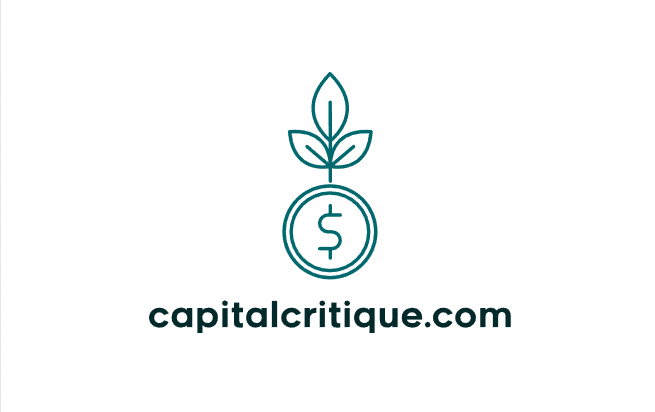In today’s fast-paced financial landscape, short-term investments play a crucial role in helping individuals achieve their financial goals efficiently. While long-term investments are often celebrated for their potential to generate substantial returns over extended periods, short-term investments offer unique advantages, particularly for those looking to grow their wealth within a shorter timeframe. In this comprehensive guide, we’ll explore the world of short-term investments, examining the best options available and strategies for maximizing returns in a brief period.
Table of Contents
Understanding Short-Term Investments
Short-term investments are financial assets designed to be liquidated or converted into cash within a relatively short period, typically ranging from a few months to a few years. Unlike long-term investments, which may involve holding assets for decades, short-term investments offer greater flexibility and accessibility, making them ideal for individuals with immediate liquidity needs or shorter investment horizons. While the potential returns on short-term investments may be lower compared to their long-term counterparts, they provide valuable opportunities for capital preservation and risk management.
Criteria for Selecting Short-Term Investments
Before delving into specific investment options, it’s essential to consider several key factors when choosing short-term investments:
- Risk Tolerance: Assess your willingness and ability to tolerate investment risk, taking into account factors such as age, financial obligations, and investment objectives. While short-term investments are generally considered less risky than long-term investments, it’s crucial to align your investment choices with your risk tolerance.
- Time Horizon: Determine the duration for which you intend to hold the investments, as this will influence your choice of investment vehicles and strategies. Short-term investments are typically characterized by shorter time horizons, making them suitable for individuals with immediate financial goals or liquidity needs.
- Liquidity Needs: Evaluate your short-term liquidity requirements and opt for investments that offer easy access to funds when needed. While some short-term investments may offer higher returns, it’s essential to strike a balance between liquidity and return potential to ensure financial stability and flexibility.
- Expected Returns: Consider the potential returns offered by different investment options and weigh them against the associated risks. While seeking higher returns is a common investment objective, it’s important to assess whether the potential gains justify the level of risk involved, taking into account your overall financial situation and investment goals.
Best Short-Term Investment Options
Description:
High-Yield Savings Accounts are a type of deposit account offered by banks and credit unions that provide higher interest rates compared to traditional savings accounts. These accounts are designed to help individuals grow their savings while maintaining easy access to their funds.
Features:
-
Higher Interest Rates: High-Yield Savings Accounts typically offer interest rates that are significantly higher than those offered by standard savings accounts. These rates can vary depending on market conditions and the financial institution offering the account.
-
FDIC or NCUA Insurance: Most High-Yield Savings Accounts are insured by either the Federal Deposit Insurance Corporation (FDIC) or the National Credit Union Administration (NCUA) up to a certain limit (usually $250,000 per depositor per institution). This insurance provides protection for depositors in the event of bank failure.
-
Liquidity: High-Yield Savings Accounts offer easy access to funds, allowing account holders to withdraw money as needed. Withdrawals can typically be made through ATM withdrawals, online transfers, or visits to the bank branch.
-
No Minimum Balance Requirements: Many High-Yield Savings Accounts do not require a minimum balance to open the account or to maintain it. This makes them accessible to individuals of varying financial means.
-
Online Access: Most High-Yield Savings Accounts can be managed online, allowing account holders to check their balances, transfer funds, and set up automated transactions conveniently from their computer or mobile device.
-
No Lock-In Periods: Unlike some other short-term investments like Certificates of Deposit (CDs), High-Yield Savings Accounts do not have lock-in periods. Account holders can deposit and withdraw funds at any time without incurring penalties.
Considerations:
-
Interest Rate Fluctuations: The interest rates offered by High-Yield Savings Accounts are subject to change over time, and they may fluctuate in response to shifts in economic conditions, central bank policies, and competition among financial institutions.
-
Fees and Requirements: While many High-Yield Savings Accounts do not have monthly maintenance fees or minimum balance requirements, it’s essential to review the terms and conditions of the account carefully. Some accounts may have fees for certain services or requirements that must be met to qualify for the high-interest rate.
-
Inflation Risk: While High-Yield Savings Accounts offer higher interest rates than standard savings accounts, the returns may not always keep pace with inflation. As a result, account holders may experience a decrease in purchasing power over time if the interest earned does not outpace inflation.
-
Opportunity Cost: While High-Yield Savings Accounts provide safety and liquidity, they may offer lower returns compared to other investment options such as stocks, bonds, or mutual funds. Investors should consider their investment objectives, risk tolerance, and time horizon when determining the appropriate allocation of their assets.
Suitable For:
- Individuals seeking a safe and liquid investment option for short-term savings goals, such as an emergency fund or a down payment on a home.
- Those who want to earn a higher interest rate on their savings without taking on the risk associated with investing in the stock market or other volatile assets.
- Investors who value the convenience of online banking and easy access to their funds.
High-Yield Savings Accounts offer a compelling option for individuals looking to earn a competitive return on their savings while maintaining liquidity and security. By carefully considering the features, benefits, and considerations of these accounts, investors can make informed decisions that align with their financial goals and preferences.
2. Certificate of Deposit (CD)
Description:
A Certificate of Deposit (CD) is a type of time deposit offered by banks and credit unions where the depositor agrees to deposit a specific amount of money for a fixed period in exchange for a predetermined interest rate. CDs are considered low-risk investments and offer a guaranteed return on investment upon maturity.
Features:
-
Fixed Term: CDs have a fixed term, which can range from a few months to several years. During this period, the depositor agrees not to withdraw the funds in exchange for earning interest.
-
Fixed Interest Rate: The interest rate on a CD is fixed for the duration of the term. This means that the depositor knows exactly how much interest they will earn over the life of the CD, regardless of changes in market interest rates.
-
FDIC or NCUA Insurance: Most CDs are insured by either the Federal Deposit Insurance Corporation (FDIC) or the National Credit Union Administration (NCUA) up to a certain limit (usually $250,000 per depositor per institution). This insurance provides protection for depositors in the event of bank failure.
-
Higher Interest Rates: CDs typically offer higher interest rates compared to standard savings accounts. The longer the term of the CD, the higher the interest rate is likely to be.
-
Penalties for Early Withdrawal: If the depositor withdraws funds from a CD before the end of the term, they may incur an early withdrawal penalty. This penalty is typically a percentage of the interest earned or a specified number of days’ worth of interest.
-
Automatic Renewal: At the end of the term, some CDs automatically renew for another term unless the depositor chooses to withdraw the funds. Depositors should review the terms and conditions of the CD carefully to understand the renewal process.
Considerations:
-
Liquidity: CDs are less liquid than other types of savings accounts because the depositor agrees not to withdraw the funds until the end of the term. Early withdrawals may result in penalties and loss of interest.
-
Interest Rate Risk: If market interest rates rise after purchasing a CD, the depositor may miss out on the opportunity to earn a higher return on their money. Conversely, if market interest rates fall, the fixed interest rate on the CD may become more attractive.
-
Reinvestment Risk: If market interest rates decline upon maturity of the CD, the depositor may have to reinvest the funds at a lower interest rate, resulting in lower returns.
-
Minimum Deposit Requirements: Some CDs require a minimum deposit amount to open the account. Depositors should review the minimum deposit requirements and ensure they meet them before investing in a CD.
Suitable For:
- Individuals with a low-risk tolerance seeking a safe and predictable investment option.
- Those with a specific savings goal and a known timeframe, such as saving for a down payment on a house or funding a vacation.
- Investors looking to diversify their investment portfolio and earn a competitive return on their savings without exposing themselves to the volatility of the stock market.
Certificates of Deposit (CDs) offer a straightforward and secure way for investors to earn a fixed return on their savings over a predetermined period. By understanding the features, benefits, and considerations of CDs, investors can make informed decisions that align with their financial goals and risk tolerance.
3. Money Market Accounts/Funds
Description:
Money Market Accounts and Money Market Funds are investment vehicles that provide individuals with opportunities to earn interest on their cash while maintaining liquidity and capital preservation. These investments primarily consist of short-term, low-risk securities such as Treasury bills, certificates of deposit (CDs), commercial paper, and municipal bonds.
Features:
-
Diversified Portfolio: Money Market Accounts and Funds invest in a diversified portfolio of short-term, highly liquid securities. This diversification helps to mitigate risk and preserve capital.
-
Competitive Yields: Money Market Accounts and Funds typically offer higher interest rates compared to traditional savings accounts. While the yields may not be as high as riskier investments, they provide a safe and stable return.
-
Liquidity: Money Market Accounts and Funds offer easy access to funds, allowing investors to withdraw money as needed. Withdrawals can typically be made through checks, debit cards, online transfers, or wire transfers.
-
Professional Management: Money Market Funds are professionally managed by fund managers who actively monitor and adjust the portfolio to optimize returns while maintaining liquidity and safety.
-
Low Minimum Investments: Many Money Market Funds have low minimum investment requirements, making them accessible to a wide range of investors. Some funds may allow investors to start with as little as $1,000 or even less.
-
Safety: Money Market Accounts and Funds invest in high-quality, short-term securities issued by government entities, financial institutions, and corporations with strong credit ratings. This helps to minimize the risk of default and loss of principal.
Considerations:
-
Market Fluctuations: While Money Market Accounts and Funds are considered low-risk investments, they are not immune to market fluctuations. Changes in interest rates, credit conditions, and economic factors can impact the performance of these investments.
-
Interest Rate Risk: Money Market Accounts and Funds are subject to interest rate risk, meaning that changes in market interest rates can affect the yields earned by investors. Rising interest rates can lead to higher yields, while falling interest rates can result in lower yields.
-
Fees and Expenses: Some Money Market Funds may charge fees and expenses, including management fees, administrative fees, and marketing expenses. These fees can reduce the overall return on investment.
-
Tax Considerations: Interest earned on Money Market Accounts and Funds is generally taxable at the federal and state levels. Investors in taxable accounts should consider the tax implications of their investments.
Suitable For:
- Individuals seeking a safe and liquid investment option for short-term cash reserves, emergency funds, or upcoming expenses.
- Those looking to earn a competitive return on their cash without taking on significant risk.
- Investors who value professional management and diversification in their investment portfolio.
Money Market Accounts and Funds offer investors a convenient and low-risk way to earn interest on their cash while maintaining liquidity and capital preservation. By understanding the features, benefits, and considerations of these investments, investors can make informed decisions that align with their financial goals and risk tolerance.
4. Short-Term Bond Funds
Description:
Short-Term Bond Funds are mutual funds that invest in a diversified portfolio of fixed-income securities with relatively short maturities, typically ranging from one to five years. These funds aim to generate income while minimizing interest rate risk by investing in bonds with shorter durations.
Features:
-
Diversification: Short-Term Bond Funds invest in a broad range of fixed-income securities, including government bonds, corporate bonds, municipal bonds, and asset-backed securities. This diversification helps to spread risk across different issuers and sectors.
-
Professional Management: Short-Term Bond Funds are actively managed by professional portfolio managers who select and monitor the securities held within the fund. These managers conduct research and analysis to identify opportunities and manage risk effectively.
-
Income Generation: Short-Term Bond Funds primarily generate income for investors through interest payments received from the underlying bonds held within the fund. These interest payments are typically distributed to investors periodically, providing a steady stream of income.
-
Capital Preservation: While Short-Term Bond Funds invest in fixed-income securities, they generally aim to preserve capital and minimize the risk of principal loss. Bonds with shorter maturities are less sensitive to changes in interest rates compared to longer-term bonds, reducing the potential for volatility.
-
Liquidity: Short-Term Bond Funds offer liquidity to investors, allowing them to buy and sell shares of the fund on a daily basis at the current net asset value (NAV). This liquidity provides flexibility for investors to access their funds as needed.
-
Yield Potential: While Short-Term Bond Funds may offer lower yields compared to longer-term bond funds or riskier investments, they typically provide higher yields than money market funds or savings accounts. Investors seeking a balance between income generation and capital preservation may find Short-Term Bond Funds attractive.
Considerations:
-
Interest Rate Risk: Short-Term Bond Funds are subject to interest rate risk, meaning that changes in market interest rates can affect the value of the underlying bonds held within the fund. When interest rates rise, bond prices tend to fall, and vice versa.
-
Credit Risk: Short-Term Bond Funds may invest in bonds issued by government entities, corporations, and municipalities, each with varying levels of credit quality. Higher-yielding bonds may carry higher credit risk, increasing the potential for default.
-
Expense Ratios: Short-Term Bond Funds may charge management fees and other expenses, known as the expense ratio, which can reduce the overall return on investment. Investors should consider the expense ratio when evaluating the cost-effectiveness of a fund.
-
Tax Considerations: Income generated by Short-Term Bond Funds is generally taxable at the federal and state levels. Taxable bond funds may distribute interest income to investors, which is subject to ordinary income tax rates. Investors in taxable accounts should consider the tax implications of their investments.
Suitable For:
- Investors seeking income generation and capital preservation in the short term.
- Those looking to diversify their investment portfolio with fixed-income securities.
- Individuals with a moderate risk tolerance who are comfortable with the potential fluctuations in bond prices and interest rates.
Short-Term Bond Funds offer investors a convenient and diversified way to access the fixed-income market while managing risk and preserving capital. By understanding the features, benefits, and considerations of these funds, investors can make informed decisions that align with their financial goals and risk tolerance.
5. Treasury Bills (T-Bills)
Description:
Treasury Bills, commonly referred to as T-Bills, are short-term debt securities issued by the United States Department of the Treasury. These instruments are used to raise funds to finance government spending and operations. T-Bills are considered one of the safest investments available, as they are backed by the full faith and credit of the U.S. government.
Features:
-
Maturity Periods: T-Bills are issued with maturity periods of 4 weeks (28 days), 13 weeks (91 days), 26 weeks (182 days), or 52 weeks (364 days). Investors can choose the maturity period that aligns with their investment horizon and liquidity needs.
-
Discounted Pricing: T-Bills are sold at a discount to their face value, meaning that investors purchase them for less than their eventual value at maturity. The difference between the purchase price and the face value represents the interest earned by the investor.
-
Fixed Interest Rates: The interest rate on T-Bills is determined through competitive bidding at Treasury auctions. Once issued, T-Bills carry a fixed interest rate until maturity, providing investors with a predictable return on investment.
-
Liquidity: T-Bills are highly liquid securities, as they can be bought and sold in the secondary market before maturity. Investors can easily access their funds by selling T-Bills on the open market, although they may receive more or less than the face value depending on prevailing interest rates.
-
Tax Treatment: Interest income earned from T-Bills is exempt from state and local income taxes, but it is subject to federal income tax. However, investors do not receive regular interest payments from T-Bills; instead, they earn interest by purchasing the bills at a discount and receiving the full face value at maturity.
-
Safety: T-Bills are considered one of the safest investments available, as they are backed by the full faith and credit of the U.S. government. This means that the government is legally obligated to repay the face value of the T-Bills at maturity, regardless of changes in economic conditions.
Considerations:
-
Yield Comparison: While T-Bills offer safety and liquidity, they may provide lower yields compared to other short-term investments such as certificates of deposit (CDs) or corporate bonds. Investors should compare the yields of T-Bills with other available options to determine the most suitable investment for their needs.
-
Interest Rate Risk: T-Bill prices are sensitive to changes in market interest rates. When interest rates rise, the prices of existing T-Bills fall, and vice versa. Investors who sell T-Bills before maturity may receive more or less than the face value depending on prevailing interest rates.
-
Inflation Risk: T-Bills may not provide adequate protection against inflation, as their fixed interest rates may not keep pace with rising prices over time. Investors concerned about inflation risk may consider investing in Treasury Inflation-Protected Securities (TIPS) or other inflation-indexed securities.
Suitable For:
- Investors seeking a safe and liquid investment option for short-term cash reserves or liquidity needs.
- Those looking to diversify their investment portfolio with a low-risk asset backed by the U.S. government.
- Individuals with a conservative risk tolerance who prioritize capital preservation and stability over higher returns.
Treasury Bills (T-Bills) offer investors a safe and reliable way to preserve capital and earn a predictable return on investment over a short-term period. By understanding the features, benefits, and considerations of T-Bills, investors can make informed decisions that align with their financial goals and risk tolerance.
6. Municipal Bond Funds (Short-Term)
Municipal Bond Funds (Short-Term) are mutual funds that invest in a diversified portfolio of municipal bonds with relatively short maturities, typically ranging from one to five years. Municipal bonds are debt securities issued by state and local governments to finance public projects such as infrastructure development, schools, and hospitals. Short-term municipal bond funds focus on bonds with shorter durations, offering investors the potential for income generation and capital preservation over a shorter time horizon.
Features:
-
Tax-Exempt Income: One of the primary advantages of investing in municipal bond funds is the tax-exempt income they provide. Interest earned on municipal bonds is generally exempt from federal income taxes and may also be exempt from state and local income taxes, depending on the investor’s state of residence and the location of the issuing municipality. This tax advantage can enhance the after-tax return for investors in higher tax brackets.
-
Diversification: Municipal Bond Funds invest in a diversified portfolio of bonds issued by various municipalities across the United States. This diversification helps to spread risk across different issuers and geographic regions, reducing the impact of any single bond default on the overall portfolio.
-
Professional Management: Municipal Bond Funds are actively managed by professional portfolio managers who select and monitor the securities held within the fund. These managers conduct research and analysis to identify opportunities and manage risk effectively, aiming to maximize returns while minimizing volatility.
-
Income Generation: Municipal Bond Funds primarily generate income for investors through interest payments received from the underlying bonds held within the fund. These interest payments are typically distributed to investors periodically, providing a steady stream of tax-exempt income.
-
Capital Preservation: While municipal bonds are subject to credit risk, Short-Term Municipal Bond Funds focus on bonds with relatively short maturities, reducing the potential for default and loss of principal. This focus on shorter durations helps to preserve capital and minimize interest rate risk.
-
Liquidity: Municipal Bond Funds offer liquidity to investors, allowing them to buy and sell shares of the fund on a daily basis at the current net asset value (NAV). This liquidity provides flexibility for investors to access their funds as needed, although the value of the shares may fluctuate based on changes in interest rates and bond prices.
Considerations:
-
Credit Risk: Municipal Bond Funds may invest in bonds issued by state and local governments with varying levels of credit quality. Higher-yielding bonds may carry higher credit risk, increasing the potential for default. Investors should carefully review the credit quality of the bonds held within the fund and assess the risk of potential defaults.
-
Interest Rate Risk: Municipal Bond Funds are subject to interest rate risk, meaning that changes in market interest rates can affect the value of the underlying bonds held within the fund. When interest rates rise, bond prices tend to fall, and vice versa. Investors should be aware of the impact of interest rate fluctuations on the value of their investment.
-
Tax Considerations: While municipal bond funds offer tax-exempt income at the federal level, investors should be aware of the tax implications at the state and local levels. Some states may tax out-of-state municipal bond income, while others may provide full or partial tax exemptions. Investors should consult with a tax advisor to understand the tax implications of investing in municipal bond funds.
Suitable For:
- Investors seeking tax-exempt income and capital preservation in the short term.
- Those looking to diversify their investment portfolio with fixed-income securities while minimizing tax liabilities.
- Individuals in higher tax brackets who can benefit from the tax advantages of municipal bond funds.
Short-Term Municipal Bond Funds offer investors a tax-efficient way to generate income and preserve capital while minimizing exposure to credit and interest rate risk. By understanding the features, benefits, and considerations of these funds, investors can make informed decisions that align with their financial goals and risk tolerance.
7. Peer-to-Peer (P2P) Lending
Peer-to-Peer (P2P) Lending, also known as social lending or marketplace lending, is a form of online lending that connects individuals or businesses seeking loans with investors willing to lend money. P2P lending platforms facilitate these transactions by providing a marketplace where borrowers and investors can interact directly, bypassing traditional financial institutions such as banks.
Features:
-
Direct Lending: P2P lending platforms act as intermediaries, matching borrowers with investors based on their borrowing needs, credit profiles, and investment criteria. Borrowers can apply for loans online, and investors can browse loan listings and choose which loans to fund.
-
Diverse Borrower Profiles: P2P lending platforms typically cater to a wide range of borrowers, including individuals, small businesses, and startups. Borrowers may seek loans for various purposes, such as debt consolidation, home improvement, small business expansion, or medical expenses.
-
Risk Assessment Tools: P2P lending platforms use proprietary algorithms and risk assessment tools to evaluate the creditworthiness of borrowers and assign them risk grades or credit scores. Investors can use this information to assess the risk of potential investments and make informed lending decisions.
-
Investment Options: P2P lending platforms offer investors a variety of investment options, including automated investing, manual investing, and diversified investment portfolios. Investors can choose the level of risk they are comfortable with and diversify their investments across multiple loans to spread risk.
-
Potential for Higher Returns: P2P lending can offer attractive returns compared to traditional fixed-income investments such as savings accounts, CDs, or bonds. Investors earn interest income on the loans they fund, which can range from a few percent to double-digit annual returns, depending on the risk profile of the loans.
-
Secondary Market: Some P2P lending platforms provide a secondary market where investors can buy and sell existing loan notes to other investors. This liquidity feature allows investors to exit their investments early if needed, although they may incur fees or discounts when selling loan notes.
Considerations:
-
Credit Risk: P2P lending carries credit risk, as borrowers may default on their loans, leading to partial or total loss of principal for investors. While P2P lending platforms use risk assessment tools to screen borrowers, there is still the possibility of default, especially for higher-risk loans.
-
Platform Risk: Investors are exposed to platform risk, as P2P lending platforms may face operational, regulatory, or financial challenges that could impact their ability to operate or fulfill their obligations. It’s essential to choose reputable and well-established platforms with a track record of success.
-
Liquidity Risk: P2P lending investments are generally illiquid, meaning that investors may not be able to withdraw their funds until the loans mature or are repaid. While some platforms offer a secondary market, liquidity may be limited, and investors may face delays or discounts when selling loan notes.
-
Interest Rate Risk: P2P lending returns are subject to interest rate risk, as changes in market interest rates can affect the attractiveness of P2P lending investments. Rising interest rates may increase default rates and reduce loan demand, impacting investor returns.
Suitable For:
- Investors seeking higher returns compared to traditional fixed-income investments.
- Those looking to diversify their investment portfolio with alternative assets.
- Individuals with a moderate to high risk tolerance who are comfortable with the potential for loan defaults and platform risks.
Peer-to-Peer (P2P) Lending offers investors an opportunity to earn attractive returns by directly funding loans to individuals and businesses. By understanding the features, benefits, and considerations of P2P lending, investors can make informed decisions that align with their financial goals and risk tolerance.
8. Corporate Bond Funds (Short-Term)
Description:
Corporate Bond Funds (Short-Term) are mutual funds that invest in a diversified portfolio of fixed-income securities issued by corporations with relatively short maturities, typically ranging from one to five years. These funds aim to generate income for investors while minimizing interest rate risk by focusing on bonds with shorter durations.
Features:
-
Diversification: Corporate Bond Funds invest in a broad range of corporate bonds issued by companies across various industries and sectors. This diversification helps to spread risk across different issuers and reduce the impact of any single bond default on the overall portfolio.
-
Income Generation: Corporate Bond Funds primarily generate income for investors through interest payments received from the underlying bonds held within the fund. These interest payments are typically distributed to investors periodically, providing a steady stream of income.
-
Professional Management: Corporate Bond Funds are actively managed by professional portfolio managers who select and monitor the securities held within the fund. These managers conduct research and analysis to identify opportunities and manage risk effectively, aiming to maximize returns while minimizing volatility.
-
Credit Quality: Corporate Bond Funds may invest in bonds with varying credit qualities, ranging from investment-grade bonds issued by highly rated corporations to high-yield bonds issued by lower-rated companies. The fund’s prospectus typically discloses the credit quality of the bonds held within the portfolio, allowing investors to assess the level of credit risk.
-
Liquidity: Corporate Bond Funds offer liquidity to investors, allowing them to buy and sell shares of the fund on a daily basis at the current net asset value (NAV). This liquidity provides flexibility for investors to access their funds as needed, although the value of the shares may fluctuate based on changes in interest rates and bond prices.
-
Yield Potential: While Corporate Bond Funds may offer lower yields compared to riskier investments such as high-yield bonds or stocks, they typically provide higher yields than money market funds or savings accounts. Investors seeking a balance between income generation and capital preservation may find Corporate Bond Funds attractive.
Considerations:
-
Interest Rate Risk: Corporate Bond Funds are subject to interest rate risk, meaning that changes in market interest rates can affect the value of the underlying bonds held within the fund. When interest rates rise, bond prices tend to fall, and vice versa. Investors should be aware of the impact of interest rate fluctuations on the value of their investment.
-
Credit Risk: Corporate Bond Funds may invest in bonds issued by corporations with varying levels of credit quality. Higher-yielding bonds may carry higher credit risk, increasing the potential for default. Investors should carefully review the credit quality of the bonds held within the fund and assess the risk of potential defaults.
-
Expense Ratios: Corporate Bond Funds may charge management fees and other expenses, known as the expense ratio, which can reduce the overall return on investment. Investors should consider the expense ratio when evaluating the cost-effectiveness of a fund.
Suitable For:
- Investors seeking income generation and capital preservation in the short term.
- Those looking to diversify their investment portfolio with fixed-income securities while minimizing exposure to interest rate and credit risk.
- Individuals with a moderate risk tolerance who prioritize stability and consistent returns over higher-risk investments.
Corporate Bond Funds (Short-Term) offer investors a convenient and diversified way to access the corporate bond market while managing risk and preserving capital. By understanding the features, benefits, and considerations of these funds, investors can make informed decisions that align with their financial goals and risk tolerance.





